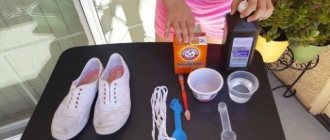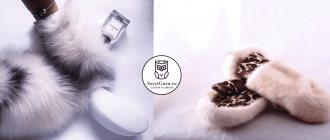Throughout my childhood I washed myself with a natural loofah washcloth! The most interesting thing about this is that I had no idea that it was a loofah! Its interesting shape, fibrous, porous structure did not in any way lead me to believe that it was a dried fruit!
Having grown up, I wondered where the raw materials for this natural washcloth come from... My surprise knew no bounds, honestly! So what is a loofah?
In common parlance, it is customary to write the word loofah with one letter f. However, the name is correctly spelled with two letters f, that is, luffa!
Loofah - what is it?
Loofah, luffa, luffa, loofah, sponge gourd, loofah plant - all these are different names for this wonderful and even a little strange vegetable. Bath sponges are made from this plant on a commercial scale - by the way, few bathhouse users know about this.
Loofah sponges are in demand in the health market. They provide high-quality massage to disperse blood throughout the body, gently and carefully deal with skin impurities.
If we talk about the luffa plant itself, then its origin is simple. This herbaceous vine is a pumpkin. The fruits of the vine belong to the pumpkin family. Externally, the fruits, from which, by the way, washcloths are made, look like a pumpkin, cucumber and zucchini in one.
This herb is native to tropical places in Asia and Africa. It is remarkable that loofah can also be grown in your garden, as it is not picky about growing conditions. Therefore, when I grow bast at home, I can get a very beautiful vine plant that will decorate your area, as well as beneficial properties from the fruits of the plant.
Growing in the middle zone is a common story. You can easily plant a squash pumpkin in your garden.
The fruits of the plant can be eaten when they are unripe. They resemble a cucumber in taste and properties, which is why the name “loofah cucumber” has become popular among people. When the fruits are mature and ripe, their insides begin to resemble a sponge. That’s why the loofah is used as an excellent, sometimes even anti-cellulite, washcloth.
How does loofah grow?
Application of the plant
Luffa has its own uses in different phases of the growing season.
So, while the fruits are young, they are used as vegetables in fresh and processed form for preparing salads, stews, and winter preserves. They taste very much like cucumbers, just as sweet and juicy.
In its mature period, luffa is collected to be dried and made from this base:
- natural sponges for washing and cosmetic procedures;
- fillings for pillows and mattresses;
- various filters;
- means of insulation;
- decorative items and clothing.
Useful properties and applications
Luffa is used for many different purposes, as the plant itself is very unique and allows a person to use it in a wide variety of ways.
So, from loofah they make:
- Soap;
- Lotions;
- Washcloths;
- dietary supplements;
- Medicines;
- Masks and other cosmetic products
Why is luffa so popular among growers and gardeners, and why can so many things be made from it? The answer lies in the composition and properties of the plant.
Compound
The composition of the plant is rich in vitamins and minerals, it has a good KBJU composition.
Contains the following vitamins and minerals:
| Minerals | mg | Vitamins | mg |
| Phosphorus | 32 | C | 12 |
| Magnesium | 14 | B5 | 0,218 |
| Sodium | 3 | B2 | 0,06 |
| Calcium | 20 | E | 0,1 |
| Potassium | 139 | B3 | 0,4 |
A fruit used for food can be safely called dietary. It has only 20 calories per 100 grams.
- Proteins – 1.2 grams
- Fats – 0.2 grams
- Carbohydrates – 4.35 grams
- Water – 93.85 grams
- Ash – 0.4 grams
Properties
- The plant contains strong natural antioxidants. This property of loofah allows people to use it for various infectious diseases. The juice of the plant has also shown antimicrobial properties in studies.
- In folk medicine, loofah juice is used internally for various diseases, such as jaundice. External use of juice - rubbing - is used when it is necessary to effectively heal animal bites, even wild ones, or to disinfect ulcerative rashes on the skin.
- Antioxidants and antimicrobial substances in the juice make it possible to use loofah as a natural antiseptic that kills harmful microflora on the surfaces of wounds and prepares damaged skin for further healing.
- Luffa seeds, which ripen inside the fruit, are also taken for medicinal purposes. When ripe, all the pulp of the sponge is used to make sponges, and the seeds hidden inside the sponge are sent for medicinal use.
- The seeds are excellent laxatives. This property of the seeds allows it to be used for constipation and poisoning. Luffa fruits also help provide a diuretic effect.
Not only seeds and juice are used as treatment. There are also roots of the herbaceous vine, which are also used internally to treat various diseases. In corners of our world, people have come up with various ways to consume loofah to ensure their health.
- The root is used to treat dropsy.
- Loofah decoctions treat hemorrhoids.
- Lufa seed oil heals the skin and improves its overall condition.
- For conjunctivitis, eye rinsing with juice is indicated.
- The seeds can be used as an antiparasitic agent.
Cosmetology
Not only does the wonderful luffa have medicinal properties. Its extract, oil and juice are abundantly added to skin preparations, masks, creams, lotions.
Antimicrobial and antiseptic properties are used to care for normal, oily and problem skin.
Moisturizing masks, facial toners, gels and facial washes are prepared from luffa. Herbal cosmetics are generally always healthier than chemical ones, although you need to be extremely careful because of possible allergic reactions. Luffa is a strong allergen, so be sure to test it on your hand before consuming or using any product.
Loofah cleansers perfectly cleanse and mattify tired skin. All dirt from the skin is washed away with the help of a toning toner, which also gives the skin a healthy glow and elasticity without excess oil.
Moisturizing masks have additional ingredients. They can be prepared at home, especially if you have your own loofah garden.
- The luffa leaves are crushed, then honey and olive oil should be added to the puree.
- The entire mask, mixed until smooth, is applied to those parts of your body where the skin most needs nutrition and hydration.
- After 10 minutes, wash off the mask with warm water.
- You need to complete your care with a nourishing cream.
A lotion or toner that whitens the face, gets rid of age spots, tightens the skin and restores the water-acid balance of the skin. You can cook it yourself. Simply extract the juice from the luffa stem and leaves. It will be a strong tonic for your skin.
Agricultural technology for wet production
The famous money-grubber, Father Fyodor Vostrikov from the immortal work “The Twelve Chairs,” dreamed of a candle factory near Samara, which would help him spend the rest of his days in prosperity and luxury in his own house with servants. Who knows, maybe for someone opening their own basting production will be the beginning of the path to great success.
The key advantage of this plant is that its well-ripened fruits make excellent natural washcloths. They gently and delicately cleanse the skin of keratinized epidermis, relieve inflammatory processes on the surface of the skin, and are an absolute hypoallergen. In general, the use of such a washcloth is a kind of symbiosis of a soft scrub and a delicate superficial massage.
The technology for growing this plant is similar to the methods of agricultural technology for melons, in particular cucumbers. For planting, it is necessary to allocate well-drained fertile areas illuminated by the sun. Trellis should be recognized as a rational method of placement. It is in this way that it will be possible to achieve uniform illumination of plants and avoid thickening, in which the level of fruiting is reduced to 30%, and the fruits become smaller by almost half. By the way, about productivity. On 1 acre you can rationally place 30 plants, from the fruits of which you can make about 900 washcloths. Considering the cost of one washcloth in a retail chain, you can fairly accurately predict expected income. The main agricultural practices are as follows:
- One of the zoned varieties for the southern regions of the country should be recognized as the “Cylindrical” variety;
- Direct sowing of seeds into the soil is associated with the risk of late frosts, so preference should be given to growing through seedlings. It is sown in peat pots in March and the ambient temperature is maintained within 24-28 degrees Celsius. The seedlings are watered abundantly, not forgetting that air humidity for pumpkin plants is a very important factor for the successful growth and proper development of seedlings;
- When the first natural leaf appears, the temperature is reduced by 3 degrees Celsius;
- Seedlings at 6 weeks of age can be hardened off;
- Planting is carried out in southern, well-lit areas, when the danger of night and morning frosts has passed;
- Due to the shallow root system of this plant, you should immediately take care of the presence of support for the stem;
- The distance between adjacent roots should be at least 150 - 170 cm;
- When the central stem reaches a length of 500 cm, it must be pinched and thereby provoke the development of lateral shoots and increase the yield;
- During the growing season, young shoots and leaves can be removed without creating zones of local thickening.
Attention! Young leaves and shoots should not be thrown away as they are an excellent base for an effective skin care product. The green mass is finely chopped, 100 g. leaves and shoots add 5 drops of unrefined olive oil, 10 g. flower honey. The mass mixes well and is applied to the skin for 10 minutes, after which it is washed off with warm water.
For clarity and understanding of the principles of basic agrotechnical practices, we will form them in the form of a table:
| Name of agrotechnical technique or operation | Its general characteristics |
| Growing and forming a central shoot | No more than 500 cm. The crown is pinched in the classic way |
| Growing and forming side shoots | Shoots from the axils of 5-6 leaves are left 50-70 cm long and pinched. Shoots from the axils of subsequent leaves are left 80-100 cm long and pinched. |
The final ripening of the fruit begins in the first ten days of October and lasts until the end of the month. Harvesting and using fruits for making washcloths has its own subtleties.
Bast from a tree - do it from the beginning
Our loofah is ripe, how to make a washcloth? If you need a soft and tender washcloth, then the fruit must be removed approximately 7-10 days before full ripening and placed to dry in a well-ventilated area, away from direct sunlight. If the goal is to obtain a more rigid product and, accordingly, more durable, then it is worth waiting for final ripening directly on the plant’s vine.
Important! Fruit harvesting must be completed before the onset of autumn frosts.
Drying of fruits is carried out within 5-15 days, depending on specific conditions; the rustling of seeds in the seed pods can be considered a signal that the fruit is ready for further use, if you shake the fruit well. The most important process is removing the skin from the fruit.
Experts are divided into two stable camps, adherents of boiling and supporters of soaking. Let's consider both methods:
- The dried fruit is soaked in warm water for 1.5 - 2 hours, after which the skin is removed by making several shallow cuts along the entire length of the fruit.
- The dried fruit is soaked in cold water for 15-20 minutes, then placed in boiling water for 10-12 minutes, boiled and removed, placed in cold water for 2-3 minutes until it cools. The peel is removed with a stocking, through a single shallow incision made along the length of the fruit.
A word from Experienced! A good tool for making cuts in the fetus is a utility knife. It has a sharp blade and allows good control over the depth of the cut.
To be fair, it is worth noting that there is also a third camp. Its adherents remove the skin and seeds from the dry fruit without soaking or boiling. But this, as they say in Odessa, is “purely for the true amateur.”
The pulp, cleared of skin and seeds, is trimmed at the ends, washed in a saturated solution of laundry soap and dried. Now the raw material can be molded into a future washcloth. Here the field for flight of imagination is truly limitless. Some people limit themselves to a classic rectangular-shaped washcloth with ribbons for holding, some make a mitten for massage, others make a washcloth in the form of intricate geometric shapes or animals.
The use of plant-based washcloths
The use of washcloths made from natural raw materials involves several points:
- Before use, soak such a washcloth in warm water for 3-5 minutes.
- You can use the product no more than 2 times a week.
- The total service life of such washcloths, subject to storage conditions, can be 2-3 months.
- Store well dried in a cool, dry place, away from direct sunlight.
The overall service life of this type of sponge directly depends on the quality and strength of the plant fibers that form the basis of the fruit. In addition, it should be remembered that the older the fruit is, the more fully it has ripened in natural conditions, directly on the plant’s vine, the longer it will last. True, although such washcloths are more durable, they are also rougher to use.
Luffa varieties for growing
There are about 50 varieties of luffa in the world. Two of them are the most common, and you should definitely try to grow them if you have a love for gardening and, in fact, your own garden.
So, there are two types of cultivated loofah:
- Luffa sharp-ribbed;
- Luffa is cylindrical.
These varieties, after centuries of cultivation, have developed large and beautiful fruits that can be used to produce environmentally friendly washcloths and more.
Ribbed luffa
This sponge is grown not so much for the sponges, but for the unripe fruits, which are actively used as food. The thing is that its fruits are more like a cucumber: they can reach 40 centimeters in length, but at the same time, the fruit has a very small diameter. Therefore, you can create a washcloth from this, but it will be a very unique shape of a “living” washcloth .
But as a culinary ingredient, the fruit of the ribbed loofah is used with a bang. In taste, color and appearance, it really looks like an ordinary cucumber. Even in terms of composition, the unripe luffa fruit contains as much as 93% water. The rest is nutrients, minerals and vitamins.
The fruits of the ribbed sponge are protected by a hard-to-remove bark. The flowers of the plant are nocturnal inhabitants. They open at night and attract nocturnal pollinators - moths, fireflies, moths.
To grow in your garden you do not need to provide any special conditions. Luffa grows independently, it is not demanding of either climate or soil, and also has a very strong immunity to fungi and parasites.
Luffa cylindrical (Egyptian)
Luffa cylindrical, unlike its brother (sister), has large fruits with a wide diameter, which is why it is perfect for making washcloths.
This variety of luffa is also distinguished by the fact that its large (up to 65 cm in length) fruits have delicate and thin skin, which is very easy to remove from a ripe fruit. This type of luffa is not usually eaten as it has much more practical benefits - natural washcloths.
But the leaves, stems, roots and seeds of both this and other varieties of luffa are used as medicinal and cosmetic products with equal success.
Growing cylindrical luffa is just as easy as growing ribbed luffa.
Both luffas can be grown in the Russian climate; they will grow equally well. The main thing is to understand what goal you are pursuing when sowing a plant. If you need to get edible fruits - sharp-ribbed. If you need a lifetime supply of washcloths, use a cylindrical one.
Health Benefits of Eating Vegetable Luffa
In many Asian countries, young loofah squash are revered for more than just their taste and nutrition. In fact, they are a traditional remedy for a wide range of health problems, including eye and heart health, preventing blood sugar imbalances, and reducing muscle and joint discomfort, to name a few. Several scientific studies show that young luffas contain some unique antioxidants, anti-cancer compounds and anti-inflammatory compounds, which may explain their long history as a traditional remedy.
Plant and grow luffa for food in the same way as if your primary goal were sponges, except you don't have to rush to plant in the spring. Why? You can expect to have your first tender pumpkins in just 45-60 days. But why choose? Many gardeners allow the first few fruits on each vine to remain on the vine to grow into squashes, and cut all subsequent pumpkins when they reach the ideal size for eating, which is a pretty good case.
Growing from seeds at home
You can grow loofah both at home and in the country.
How to sow
In early March, we warm up the seeds in 35-degree heat. Soak in a damp cloth at 28 degrees for several days after heating for a week.
Next, sow the seeds in glasses with soil, 15-20 mm deep. Covered with clear glass, leave the seed in a warm place.
How and when to plant luffa seedlings
Monitor the development of the plant. Shoots appear - move the plant to light and a temperature of 22 degrees. Before sowing in soil or a large pot, feed the plant with fertilizer.
This is done closer to summer, in May-June. Luffa loves warmth, so its growth period is spring-summer.
Care
The loofah needs to be protected from frost. Ten days after planting in the ground, you can fertilize the plant. It is developing very quickly. Water when the soil dries out.
Planting luffa seeds
Loofah seeds can take up to 150 or even 200 warm days to germinate, grow into a vine, flower and produce a sponge ready for harvest, so most gardeners in colder climates start luffa seed seedlings indoors in tall pots (12-15 cm.) approximately 4-6 weeks before the last possible spring frost. Gardeners in warmer zones can plant seeds directly into the soil or into an outdoor container if the weather is warm in late spring. For good germination, the temperature of the soil, not the air, must be at least 21 degrees. Don't rush, the seeds are more likely to rot than to germinate.
Natural loofah sponge - how to make it yourself
Plant-based loofah washcloths are a separate topic worthy of attention. They are so popular due to their configuration. Soft, yet exfoliating, washcloths and loofahs
- firstly, they are environmentally friendly and tend to decompose when disposed of;
- secondly, very effective for baths and showers.
The porous structure of the eco-loofah washcloth effectively removes dirt and dead skin from the body. Together with the use of other loofah products, you can achieve a sustainable effect in caring for your body.
How to make and soften a washcloth
- Collect more green fruits.
- Trim the ends.
- Sprinkle out the seeds.
- Hang the fruits to dry for a month.
- Soak in boiling water several times a week.
- Peel off the skin.
- Use a brush to clean the insides.
- Wash the washcloth and dry it.
Every month it is necessary to change the washcloth for hygienic reasons.
DIY massage soap with loofah: recipes
To make massage soap with loofah, stock up on soap base. This soap combines the effects of the soap you prepare (you can even use loofah extract) and a loofah washcloth. A very convenient and useful product in the shower.
- Melt the soap base.
- Add loofah extract, coloring and flavoring to it to taste.
- Add oils and other nutrients.
- Place loofah sponges in the pan so that they are higher than the edges of the pan.
- Fill the washcloths with soap base.
- Cool.
- Remove from the mold and cut the soap.
For a detailed recipe, watch the video.
How to use
Use a loofah washcloth in the shower or bath. Wet the soap, lather it, and use the visible parts of the loofah as a massage washcloth.
Luffa sponge for face
This sponge is used as a gentle washcloth for the face. It removes dead skin cells when washing with gel or other cleansers.
To make a facial sponge, use the same recipe as for a washcloth. Once you receive the washcloth, divide it into equal small parts and gently compress it. After this, the sponge is ready.











